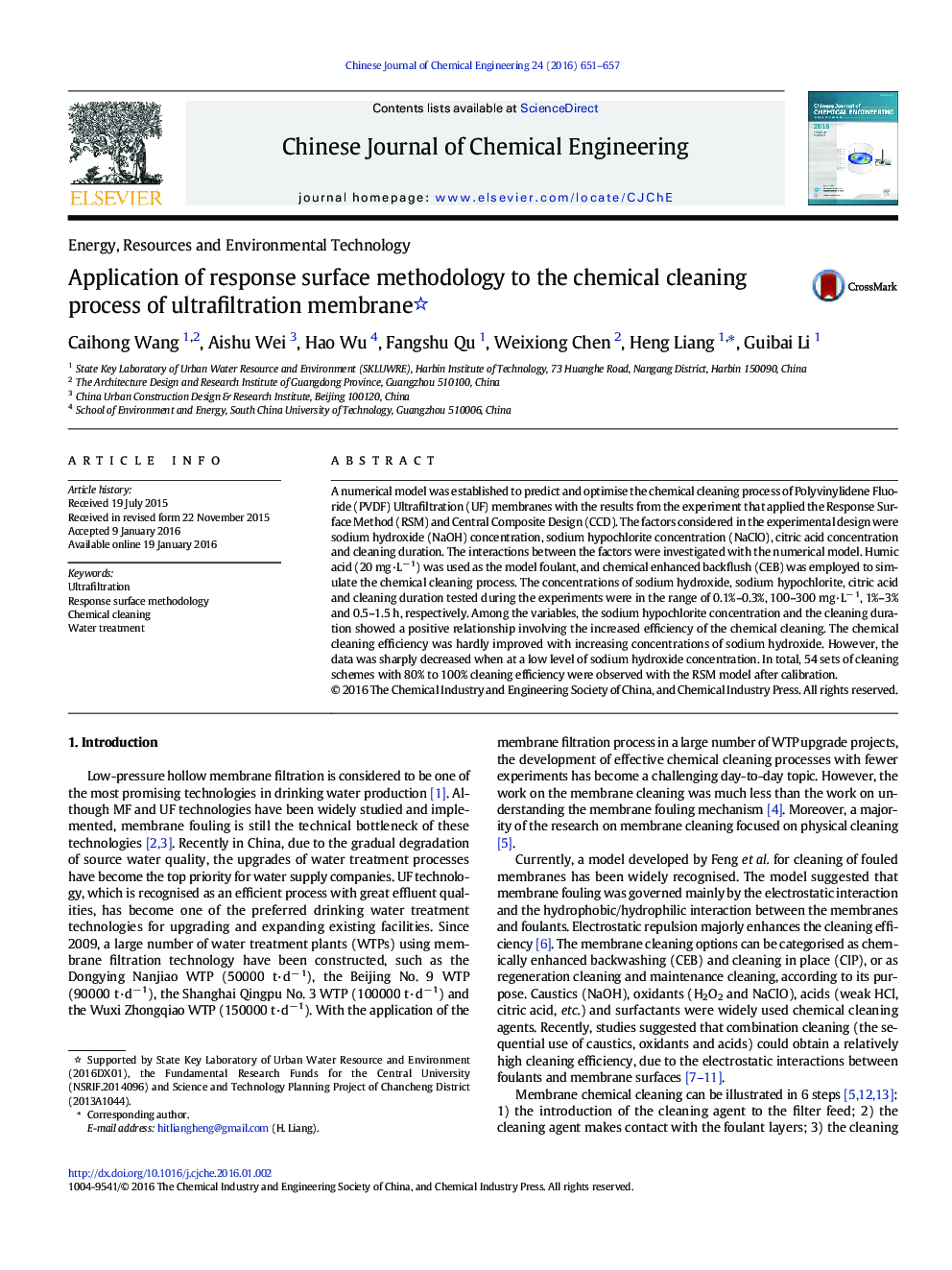| Article ID | Journal | Published Year | Pages | File Type |
|---|---|---|---|---|
| 166317 | Chinese Journal of Chemical Engineering | 2016 | 7 Pages |
A numerical model was established to predict and optimise the chemical cleaning process of Polyvinylidene Fluoride (PVDF) Ultrafiltration (UF) membranes with the results from the experiment that applied the Response Surface Method (RSM) and Central Composite Design (CCD). The factors considered in the experimental design were sodium hydroxide (NaOH) concentration, sodium hypochlorite concentration (NaClO), citric acid concentration and cleaning duration. The interactions between the factors were investigated with the numerical model. Humic acid (20 mg·L− 1) was used as the model foulant, and chemical enhanced backflush (CEB) was employed to simulate the chemical cleaning process. The concentrations of sodium hydroxide, sodium hypochlorite, citric acid and cleaning duration tested during the experiments were in the range of 0.1%–0.3%, 100–300 mg·L− 1, 1%–3% and 0.5–1.5 h, respectively. Among the variables, the sodium hypochlorite concentration and the cleaning duration showed a positive relationship involving the increased efficiency of the chemical cleaning. The chemical cleaning efficiency was hardly improved with increasing concentrations of sodium hydroxide. However, the data was sharply decreased when at a low level of sodium hydroxide concentration. In total, 54 sets of cleaning schemes with 80% to 100% cleaning efficiency were observed with the RSM model after calibration.
